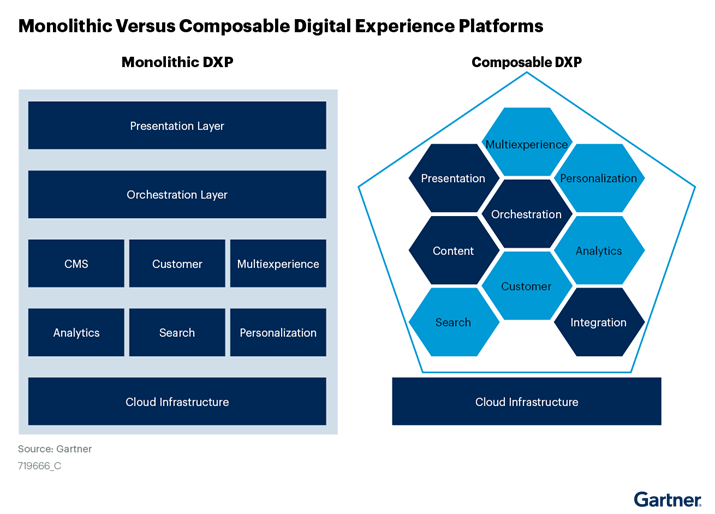The benefits of a composable DXP
Higher ROI
A composable DXP is more cost-effective than an extended legacy system, plus it enables the company to generate profit sooner thanks to the separate parts. Thus, this solution brings higher return on investment in the long run.
Quick reactivity
Separating the frontend and the backend and the use of the PBCs create the opportunity to manage all parts distinctively which means that in case of an error or a development, the modifications can be finished quickly. We do not need to change the whole structure, and this minimizes the risks while saving time.
High-level flexibility
The integration of external platforms to monolithic systems is quite complicated, while the composable DXP turns this into an advantage: new tools can be added to the existing PBCs anytime, improving the customer experience.
Future-proof structure
As slight changes can be implemented quickly and cheaply, we do not have to worry about what trends will appear in the industry in the future. Any demands can be met without reshaping the entire system, not to mention that a composable DXP makes the transfer to cloud-based technology faster.
Overall view of the customer
A digital experience platform offers an overall experience for customers, resulting in collecting realistic data. We can learn how our customers behave on each channel and can make greater decisions according to those.
Personalized user experience
Automatized content management creates an opportunity to follow the customer trends and to answer them effectively: the channels can be combined flexibly. In the headless system it is more than enough to focus on one particular PBC, thus the complexity of processes is reduced while the customers feel like our service was made for them.
Transparency
Unlike monolithic systems, a composable architecture is transparent, so errors can be found easily. If we know where the bug is, we only need to check that part of the code.
Low risk
Given that the systems run separately, an error cannot cause bugs nowhere else. This means that we only need to focus on the parts concerned.

